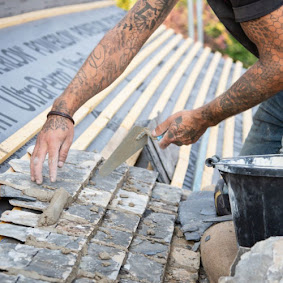What Are The Factors That Change The Trends In Roof Tiles?
Many trends and changes are causing the tile industry to become more complex, necessitating a more significant commitment from installers. Manufacturers have recognized this and have worked with contractors and installers to provide contractors with tools to help ensure tile lives up to homeowner expectations, from product to installation.
Let's see some of the trends causing changes in the Collyweston roof tiles segment:
1) Architectural Changes:
Tiles were traditionally laid on level roof planes. Roofline complications such as various roof slopes on the same structure, convoluted hips, and valleys, and designs much more chopped up than typical roofing are becoming increasingly common nowadays. Manufacturers have designed roof systems differently to handle the increasingly frequent architectural characteristics in this high-end market segment - eyebrow dormers, turrets, and sweeping curved roof sections. This complexity makes for a much more complex installation that may require additional flashings, underlayment, or ventilation expertise.

2) Lightweight Products:
Manufacturers are looking for methods to make their tile patterns stronger while using less material to fulfill the needs of builders and installers. Compared to regular weight tile, lightweight tile can help contractors save money by reducing structural requirements. A limited number of quality lightweight tiles are now available, and more are on the horizon. Research and development have to lead to better products than those previously on the market. Aside from lowering freight costs, lightweight tile is also easier to work with. Contractors should save money on labor by using lightweight tiles that require less time and equipment to install. However, lightweight tile lines do not provide a variety of concrete tiles.
3) Lifecycle of Collyweston Roof Tiles:
Roof tiles will never be ideal for the home market sector seeking the most prominent house at the lowest price per square foot. However, the high-end roof market segment that is a good fit for Collyweston roof tiles is becoming more conscious of lifecycle costing and considering a roof investment in the long run. These homeowners have accumulated wealth by making smart decisions and understanding the lifecycle perspective. The initial roof investment is up to three times higher than ordinary options, but it will last five times longer; this customer recognizes the trade-off. From manufacturer to contractor to installer, the entire industry has a role in educating consumers on this matter.

4) Environment and Energy Trends:
Like other segments of the roofing
industry, environmental concerns - including energy-saving alternatives - are
impacting the tile roof segment. We're seeing more requests for pure white
tiles for improved energy efficiency. It was rare to receive this kind of order
a few years ago. New product developments support the interest, including
additives and sealers to maintain mold- and algae resistance and retain the
white color.
Installation techniques that improve energy efficiency are also contributing to this trend. Installers can use battens and counter-battens to raise tile off the deck and allow better airflow to control heat instead of nailing tile directly.
Conclusion:
Are you planning to switch to Collyweston slates according to the trend? Which factors do you consider when hiring a Collyweston roof tiles contractor?


Comments
Post a Comment